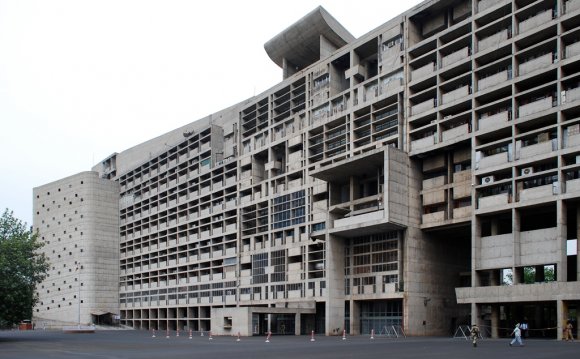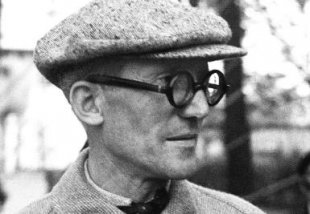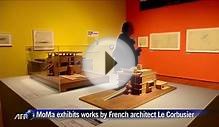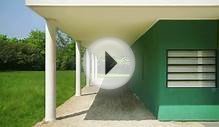
 Swiss-born architect Le Corbusier (1887-1967) circa 1937. Photo by Fred Stein Archive/Archive Photos Collection/Getty Images (cropped)
Swiss-born architect Le Corbusier (1887-1967) circa 1937. Photo by Fred Stein Archive/Archive Photos Collection/Getty Images (cropped)
Updated .
Background:
Name at Birth:
Born Charles-Edouard Jeanneret-Gris, Le Corbusier adopted his mother's maiden name in 1922 when he set up a partnership with his cousin, engineer Pierre Jeanneret.
Early Training:
- Art education, La Chaux de Fonds
- Studied modern building construction with Auguste Perret in Paris
- Worked with Austrian architect Josef Hoffmann
Famous Buildings Designed by Le Corbusier:
- 1927-1928: Palace for the League of Nations, Geneva
- 1931-1932: Swiss Building, Cité Universitaire, Paris
Other Important Works:
- 1922: Ozenfant House and Studio, Paris
- 1953-1957: Museum at Ahmedabad, India
- 1950-1963: High Court Buildings, Chandigarh, India
- 1950-1955: Notre-Dame-du-Haut, Ronchamp, France
- 1954-1956: Maisons Jaoul, Neuilly-sur-Seine, Paris
- 1957-1960: Convent of La Tourette, Lyon France
- 1958: Philips Pavilion, Brussels
- 1961-1964: Carpenter Center, Cambridge, MA
- 1963-1967: Centre Le Corbusier, Zürich, Switzerland
In his 1923 book Vers une architecture, Le Corbusier described "5 points of architecture" that became the guiding principles for many of his designs, most especially Villa Savoye (view image).
- Freestanding support pillars
- Open floor plan independent from the supports
- Vertical facade that is free from the supports
- Long horizontal sliding windows
- Roof gardens
An innovative urban planner, Corbusier anticipated the role of the automobile and envisioned cities with big apartment buildings in park-like settings.
Quotes:
- "The house is a machine for living in." (Vers une architecture, 1923)
- "By law, all buildings should be white."
About Le Corbusier:
During his long life, Le Corbusier designed buildings in Europe, India, and Russia. Le Corbusier also designed one building in the United States and one in South America.
The earlier buildings by Le Corbusier were smooth, white concrete and glass structures elevated above the ground. He called these works "pure prisms." In the late 1940s, Le Corbusier turned to a style known as "New Brutalism, " which used rough, heavy forms of stone, concrete, stucco, and glass.
RELATED VIDEO












